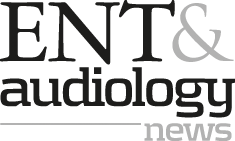Audiology features
Innovations in remote/teleaudiology patient care
Audiometry remains the gold standard in hearing evaluations. Changes in the delivery of audiometry remain a key challenge in providing a telehealth approach to hearing care. The team at Lyon University Hospital validated an innovative approach to solving this challenge,...
Aided cortical assessment: uses in a paediatric hearing implant centre
When can an aided cortical assessment help decision making in a child’s hearing journey? In this article, the author demonstrates the application using an enlightening case study approach. A device, be it a conventional hearing aid or hearing implant, ideally,...
Mind the gap – developing a sustainable pipeline for hearing therapeutics
In this article, the authors describe three key challenges faced in developing hearing therapeutics. Collaboration between companies, sectors and disciplines will be key to finding solutions. The unmet need for therapies for hearing loss grows apace, with prevalence rising across...
Microneedles enable inner ear precision medicine
Developing safe, reliable and efficient ways to deliver therapeutics into the cochlea is a key challenge. In this article, the authors share their work to develop microneedles to address this challenge. The era of precision medicine of the inner ear...
Cell therapies for hearing loss
Cell therapies could offer a way to repair damage to the auditory system and reverse many types of hearing loss. This article looks at the progress being made.
OTC hearing aids: where are we now?
The ‘Over-the-Counter Hearing Aid Act’ of 2017 set in motion plans for a long-debated shift in the hearing care market. In 2021, the FDA released draft guidance which will allow hearing aids in the US to be sold direct to...
The preventative audiologist
Rob Shepheard has been championing the role of ‘the preventative audiologist’ for many years. In this article, he explores how that can be achieved.
Fall prevention in the elderly population
A fall in later life can have a catastrophic impact on a person’s quality of life. Lilian Felipe explains how falls prevention programmes and vestibular rehabilitation can help.
COOL therapy for cisplatin-induced hearing loss
Cisplatin is a commonly used cancer therapy, with nearly 50% of patients undergoing chemotherapy receiving cisplatin as part of their regimen [1]. Depending on the dose, incidence of hearing loss has been reported as 12-100% in adults, and 37-94% in...
A new approach to workplace hearing conservation
The traditional approach to managing workplace noise has failed - how can we better protect our nation’s hearing using smart hearing protection? Occupational noise-induced hearing loss (ONIHL) is the most common occupational health condition in the world and the most...
Acute otitis externa: what are the important outcomes?
Matthew Smith discusses a project looking at outcomes of acute otitis externa interventions, and how, going forward, the INTEGRATE team are working with patients to develop outcome measures. Acute otitis externa (AOE) is one of the most common conditions of...
Ear wax: the good, the bad, and the ugly
With ear wax removal being a core part of ENT and audiology services, Seth Schwartz gives us his dos and don’ts. We have all seen cartoons where a character pulls enough wax out of their ears to make a candle....
















